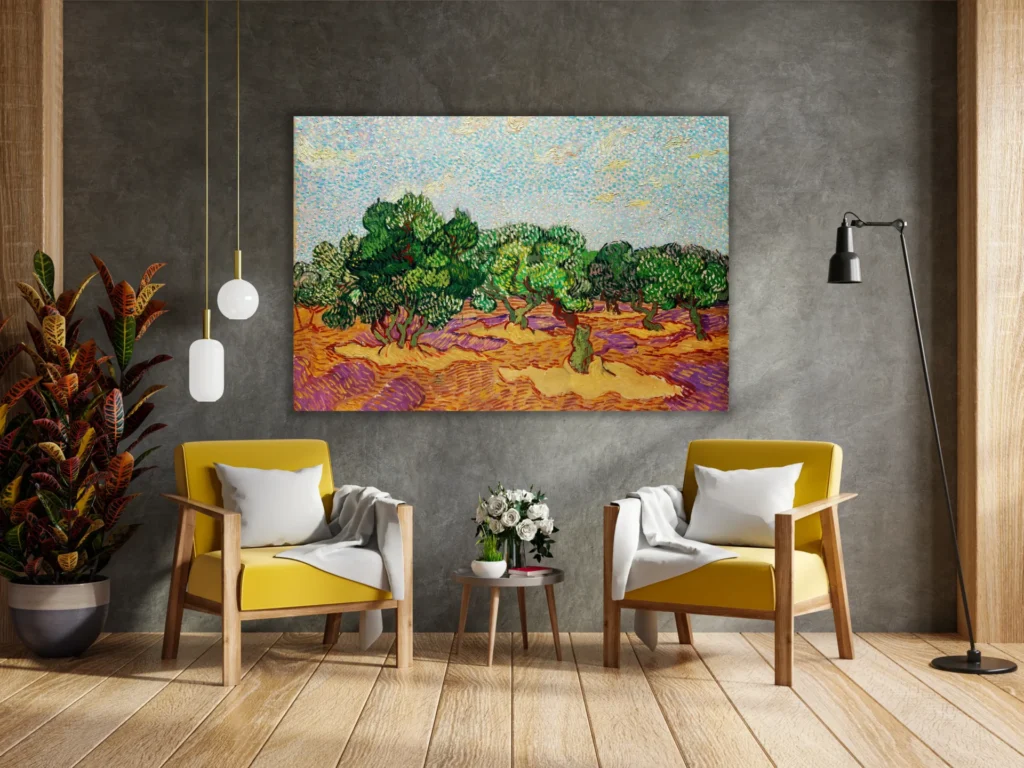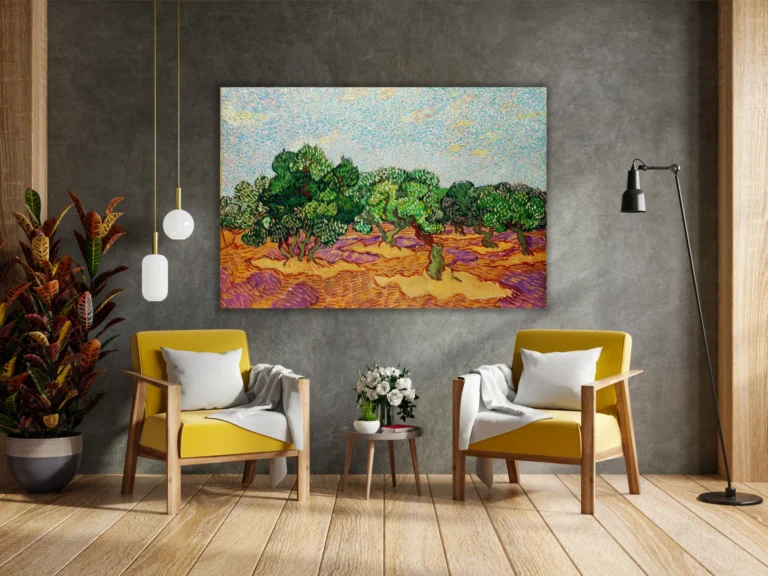The Olive Trees (1889)
The Olive Trees series by Vincent van Gogh consists of captivating paintings that emerged from his artistic journey in 1889 while he was an inmate in an asylum in France. These works depict the olive trees that mirror his internal emotional struggles and reflect a powerful connection with nature. Characterized by dynamic brushstrokes and emotive colors, each painting encapsulates life, spirituality, and Van Gogh's turbulent state of mind, making them integral to his legacy.
1889
About the Artwork
While living in the Asylum of Saint-Paul-de-Mausole, Van Gogh sought solace in the beautiful landscapes surrounding him, especially the olive trees. These trees resonated deeply with his personal narrative, symbolizing both resilience and the continuum of life. During this time, he often turned to nature for comfort amid mental anguish, leading to burgeoning creativity captured in vibrant hues and swirling patterns of paint. His works from this period, particularly the olive trees, showcase a maturation in his artistic style, transcending mere representation to evoke a profound spiritual connection. The thematic significance of the olives extended to their biblical associations, further enriching their role as a subject in his oeuvre. Van Gogh's artistic exploration during this critical period solidified his legacy as a master of emotional depth through nature.
Did You Know
Olive trees are often associated with peace and abundance. For Van Gogh, they represented life’s cyclicity and the spirit present in nature, reflecting his search for solace during a period marked by emotional turmoil.
During this period, Van Gogh was deeply influenced by the symbolism of olive trees in Christian narratives, most notably seen in the story of Christ in the Garden of Gethsemane, adding spiritual depth to his works.
While Van Gogh’s olive tree paintings are celebrated now, during his lifetime, he faced criticism from contemporaries who did not fully appreciate his unique emotional style and expressive use of color, which were ahead of their time.










